Python is one of the most popular programming languages and offers you, as a beginner, numerous opportunities to bring your ideas to life. One of the central concepts in Python is object-oriented programming, where classes and methods play a crucial role. In this guide, you will learn how to create classes, implement methods, and use them effectively to create a functional “car” and other objects. Together, we will get your car on the road and enhance your understanding of Python programming.
Main Insights
- Classes and methods allow you to write structured and well-organized programs.
- With the __init__ method, you can initialize objects with specific properties.
- Getters and setters help you access and modify the attributes of your classes.
- Methods can manipulate attributes and provide you with the opportunity to write reusable code.
Step-by-Step Guide
Step 1: Create the Car Class
To simulate a car, you start by creating a class. This class will serve as the foundation for your car.
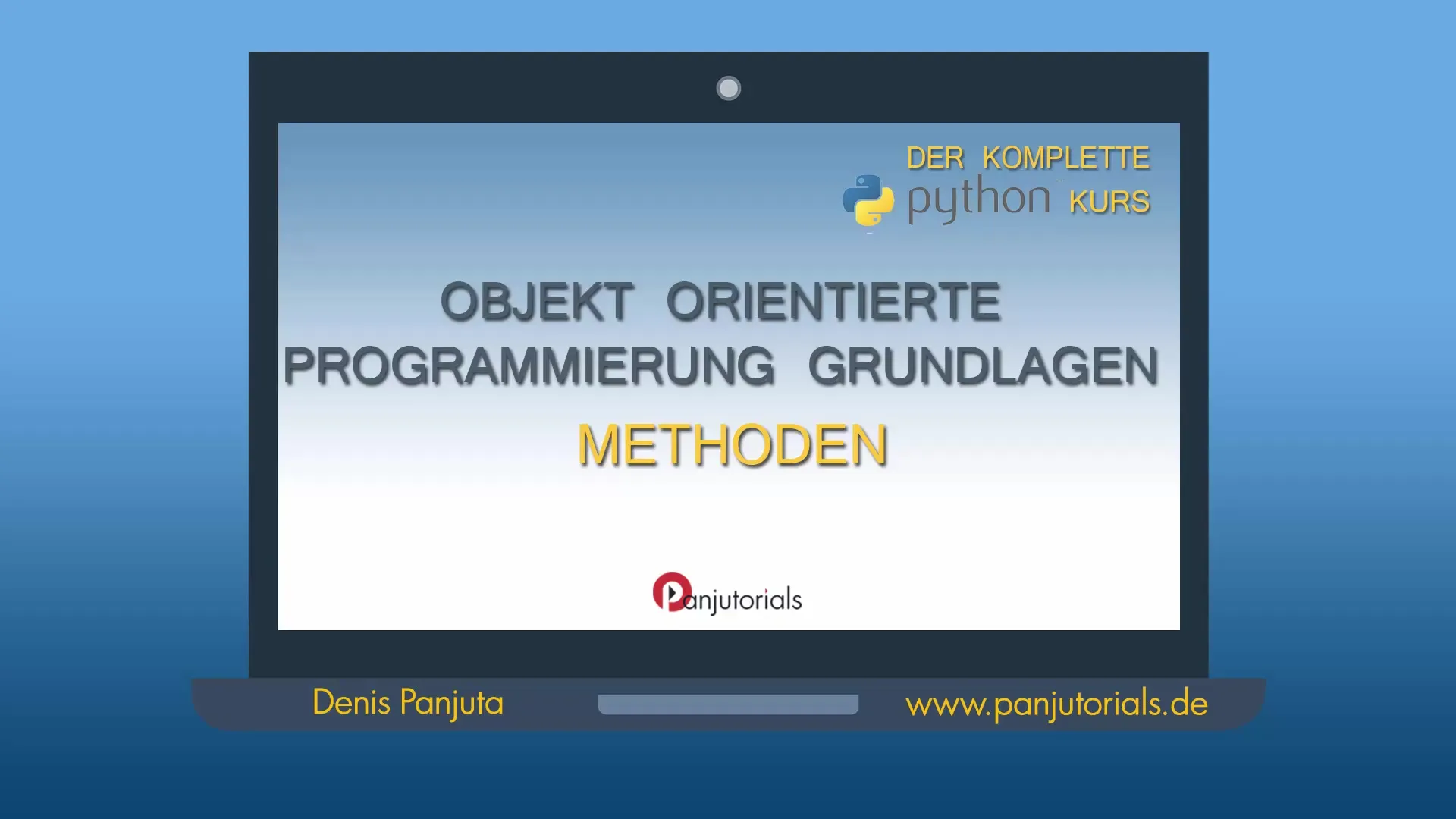
Define the class “Car” and add the __init__ method. This method is used to define the basic properties of a car, such as color, horsepower and number of tires. A basic car cannot drive yet, but we will change that shortly.
Step 2: Add the Drive Method
Now it’s time to give your car functionality – it should be able to drive. To do this, you add a method to the Car class that describes this action.

The drive method takes a parameter for speed, uses self to access the car's attributes (such as make and horsepower), and outputs a simple message indicating how fast the car is going.
Step 3: Initialization and Instantiation
Now you instantiate your car. Create an instance of the class and give it specific values to personalize the car.

For your example, you can use an Audi A4 with 200 horsepower and a speed of 200 km/h. Research how to call the drive method for your car and pass the speed.
Step 4: Extend the Vehicle Class
To expand our skills, we will create another class - “Circle”. This class will demonstrate how to work with objects that possess geometric properties.
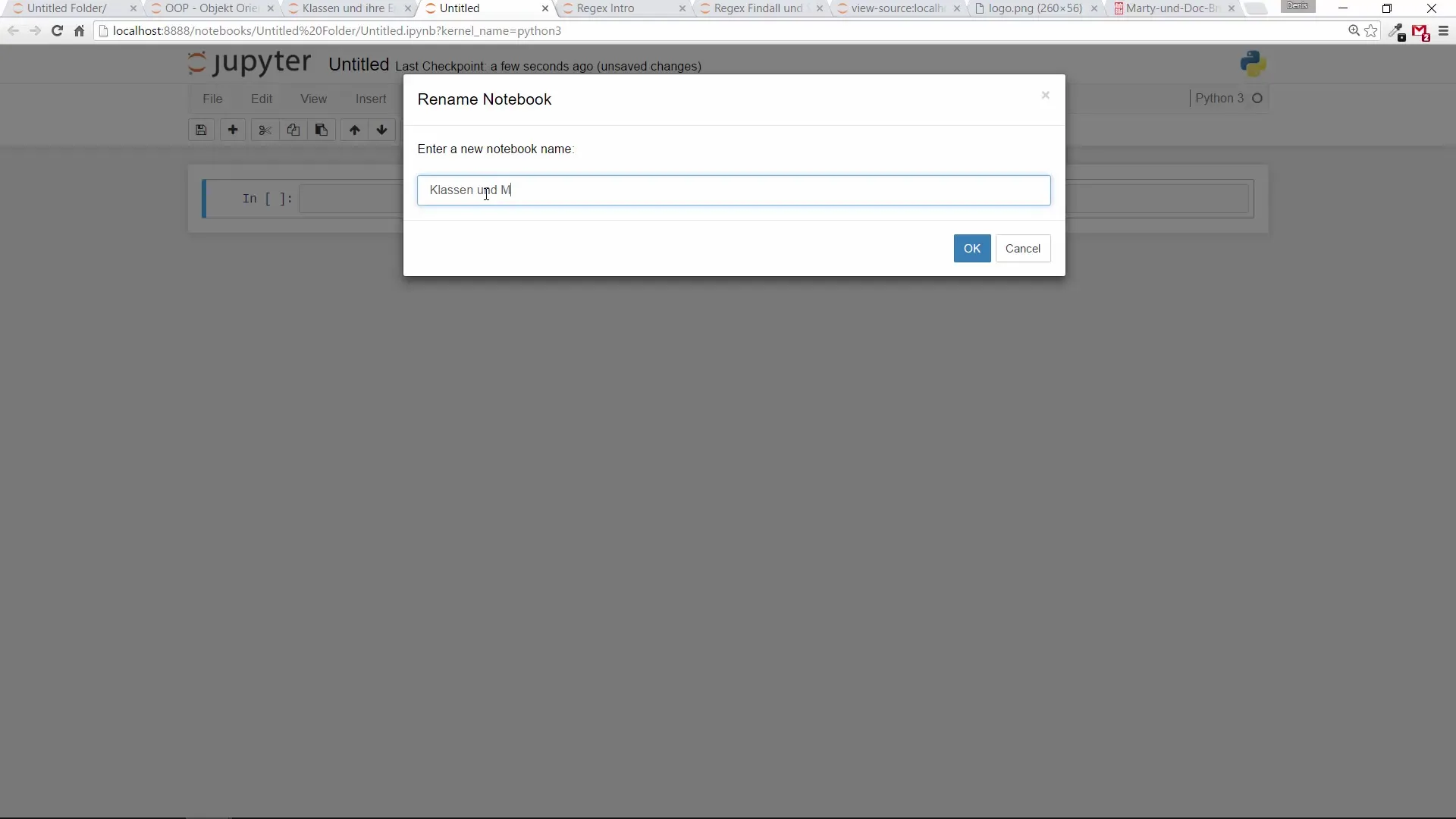
Here, it is important how you use the __init__ method to initialize the radius of the circle. Use the class to create and manipulate different instances with specific radius values.
Step 5: Add Getters and Setters for the Radius
To work with the radius of the circle, create getter and setter methods. These functions allow you to change and query the radius, teaching you the principles of encapsulation and data hiding.
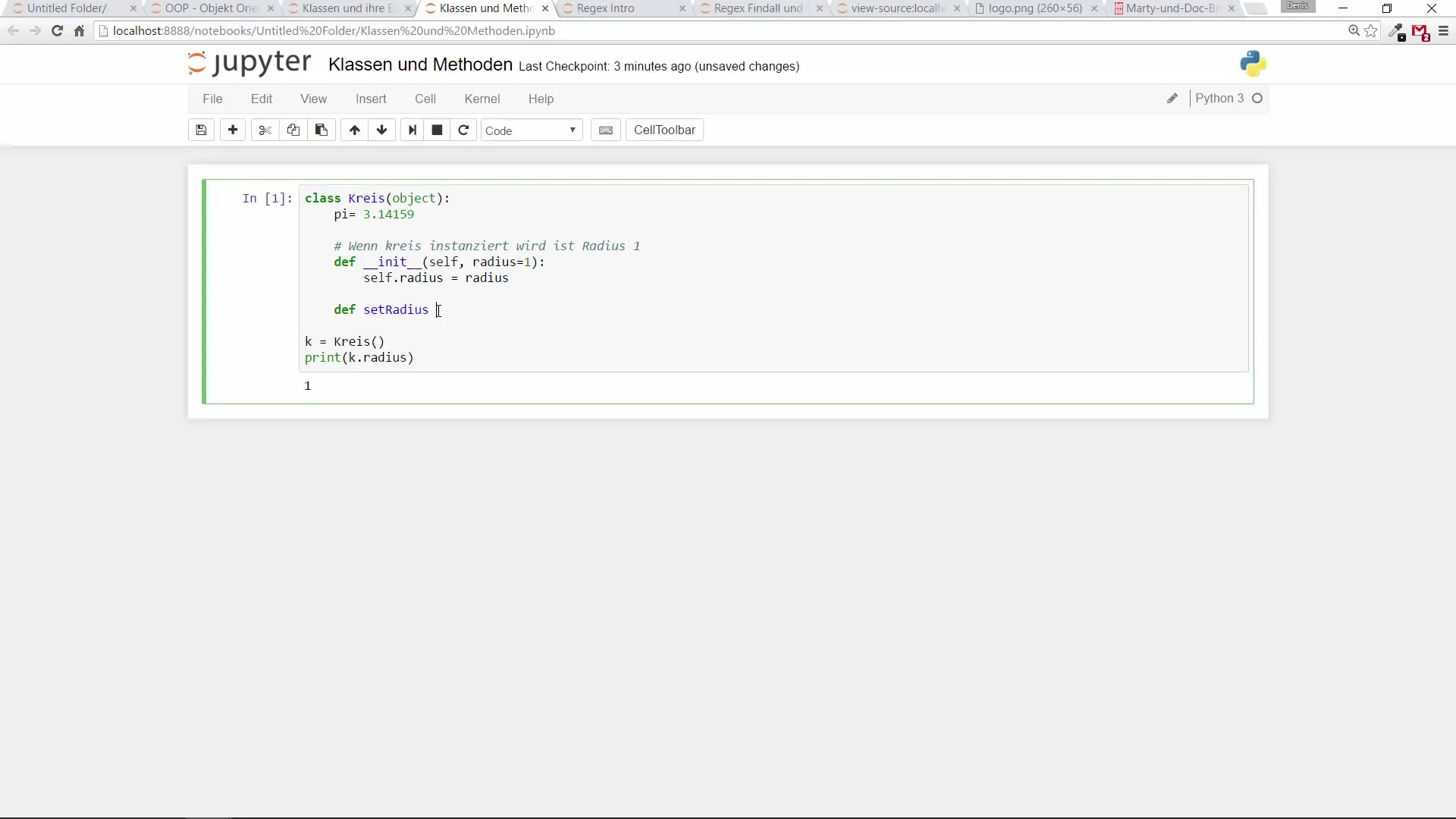
The setter method allows you to increase or decrease the radius, while the getter method provides the current radius.
Step 6: Calculate Area and Circumference of the Circle
Now, we will extend the Circle class by adding new methods for calculating the area and circumference. In Python, mathematical calculations are an important application.
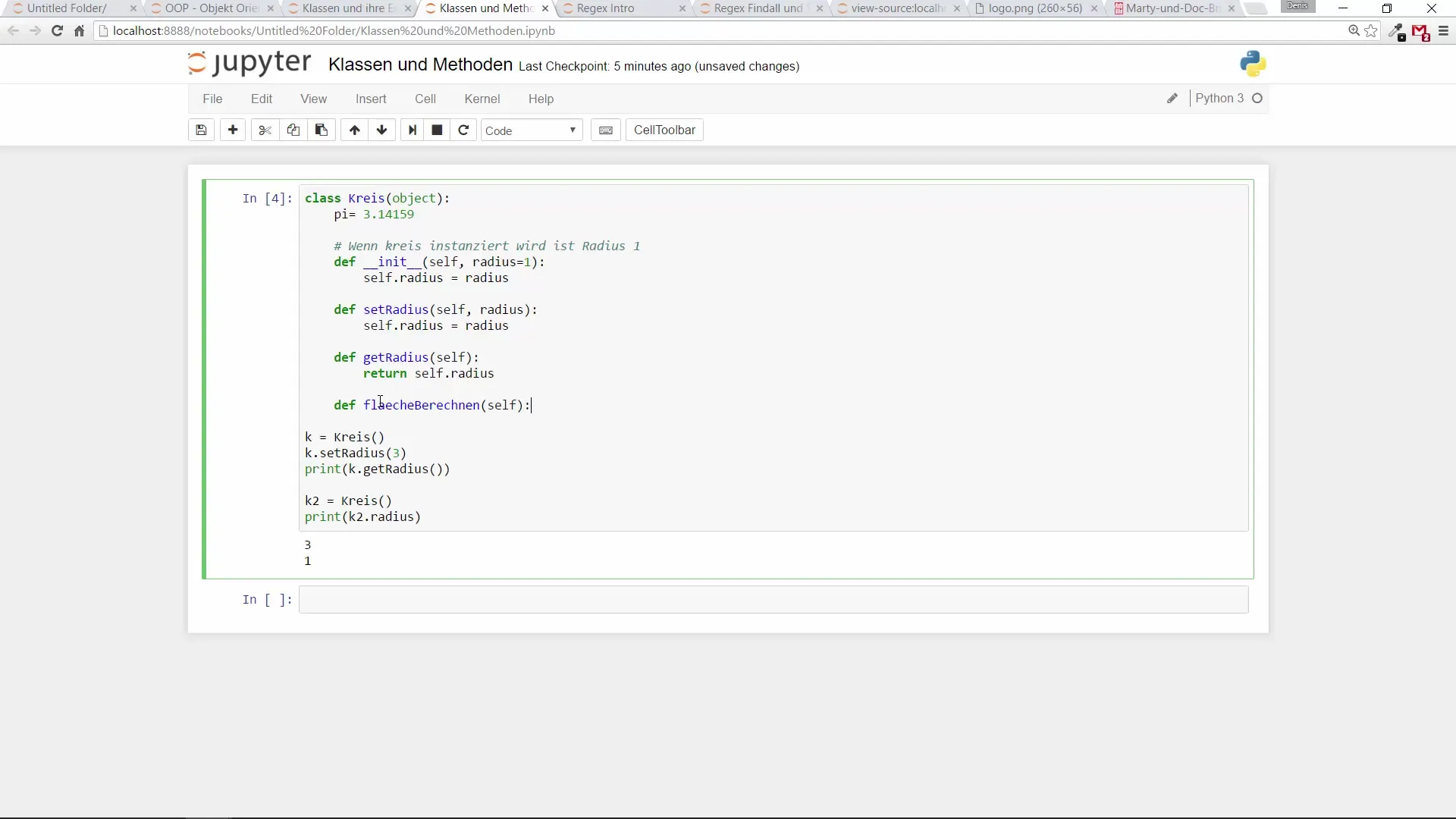
Use the formula for the area (A = π r^2) and for the circumference (U = 2 π * r). Make sure to pass the appropriate values and display the results correctly.
Step 7: Output the Results
To ensure everything works correctly, perform a test and output the results. Print the radius, area, and circumference of the circle for verification.
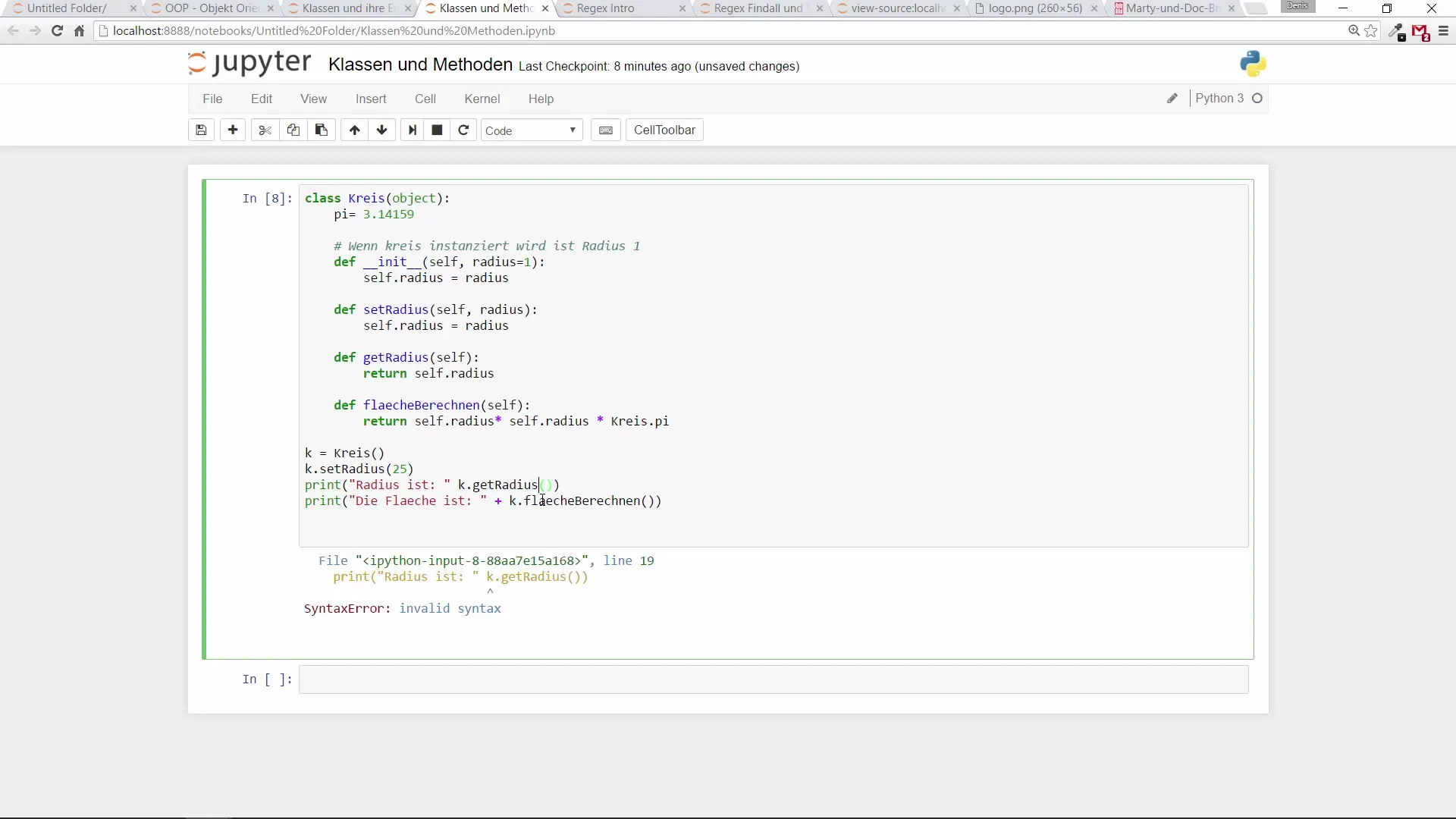
Use print statements to display the corresponding values and check if the mathematical calculations are correct for different radii.
Summary – Using Python Classes and Methods Efficiently
In this guide, you learned how important classes and methods are in Python. You have seen how to define useful functionalities for objects by adding methods and using them to display and calculate specific values. The structure of a class and the use of getters and setters provide you with the opportunity to encapsulate your data cleanly and use it safely.
Frequently Asked Questions
How do I create a class in Python?You use the keyword class, followed by the class name and the required methods.
What is the purpose of the __init__ method?__init__ is the constructor of a class, used to initialize instance attributes when creating an object.
What are getters and setters?Getters and setters are methods that allow access to internal object attributes; getters return values and setters set values.
How do I calculate the area of a circle in Python?Use the formula A = π * r^2 and implement this in a separate method within the Circle class.
Can I create multiple instances of a class with different attributes?Yes, you can create as many instances of a class as you like, each with its own values and properties.


